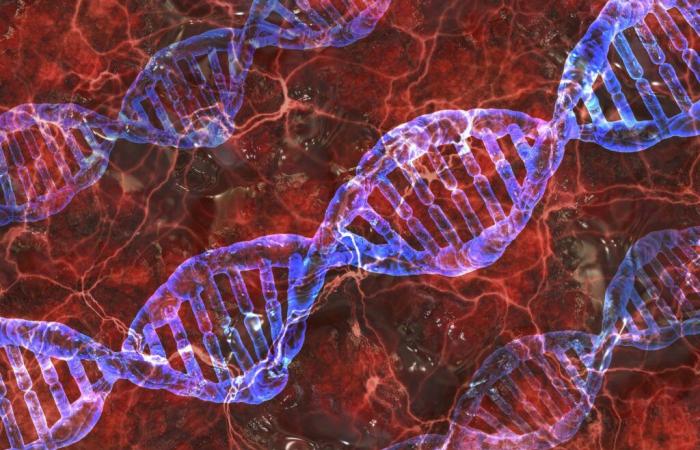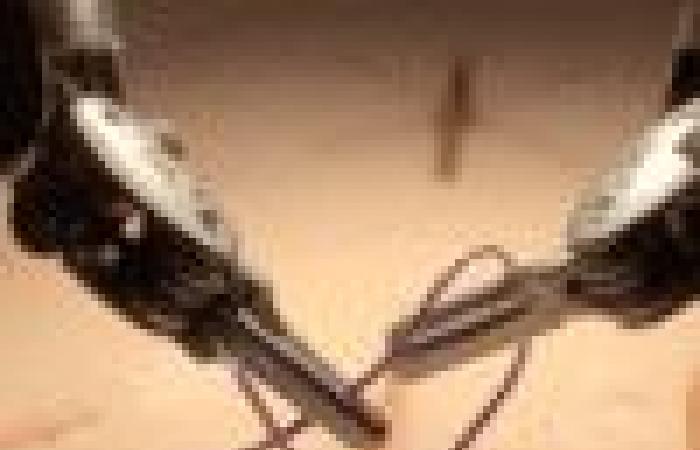⇧ [VIDÉO] You might also like this partner content
In recent decades, gene therapy has established itself as an essential pillar in the treatment of numerous hereditary genetic diseases and certain cancers. However, the complexity linked to the size of defective genes in certain pathologies has long hampered its application, particularly in muscular dystrophies. Current methods cannot provide sufficient genetic material to effectively treat these diseases. However, a team of British researchers has proposed an innovative approach to resolve this problem, thus opening new avenues for the development of targeted gene therapies against this type of degenerative muscle disorder.
Gene therapy aims to introduce genetic material, whether DNA or RNA, into cells in order to treat a disease. This material is carried by a vector which then releases it into the nucleus of the cell to be “repaired”. In the context of neuromuscular diseases, the vector of choice is often the adeno-associated virus (AAV). Various strains of AAV are used to target specific organs. For muscles, AAV8 and AAV9 are predominant.
However, for muscular dystrophies, these vectors face a significant limitation: their inability to carry the complete dystrophin gene. However, a successful collaboration between the University of Rochester, CANbridge Pharmaceuticals and Scriptr Global Inc., resulted in an ingenious solution to efficiently transport these large genes.
« Gene therapy is a powerful tool for delivering a healthy copy of the gene to a patient’s cells to correct genetic diseases. However, current vectors are small, which limits their use to diseases caused by mutations in genes of reduced size. said Douglas M. Anderson, lead author of the study and professor at the University of Rochester School of Medicine and Dentistry, in a statement. Faced with this constraint, researchers have developed an innovative technology that they called Stitch RNA, or more simply StitchR.
The concept of StitchR is based on the delivery of larger genetic loads using two independent AAVs. In practice, StitchR delivers two halves of a gene separately. Once in the cell nucleus, these DNA segments each generate messenger RNAs (mRNAs) which join together with great precision using ribozymes, thus restoring the expression of the missing or inactive protein. “ Rather than transmitting the entire gene in a single vector, which is impossible, we developed an efficient dual vector system where two halves of a gene are transmitted separately but join together to replenish the large mRNA in affected tissues. », specifies Anderson.
A promising and effective technology
According to the researchers, the genesis of StitchR came from a chance observation. In laboratory experiments, they discovered that two distinct mRNAs, cut by ribozymes, could assemble with great precision, behaving like their natural counterparts and translating into a large protein. They also observed that these ribozymes, by cutting the RNA, left ends easily recognized by the cell’s natural repair system.
« Just as CRISPR enzymes are used to cut DNA, they are just scissors; These are the cell’s natural repair enzymes that glue the DNA back together “, says Anderson. He adds: “ The ribozymes act like scissors, and the cell’s natural repair pathways connect the two RNAs together. It is remarkable that two distinct mRNAs can come together, and that this process is so efficient ».
Following this discovery, the team optimized the process, increasing its efficiency by more than 900 times compared to initial trials, although this information needs to be verified to ensure contextual accuracy. In 2021, CANbridge signed a collaboration agreement with Scriptr Global Inc to develop gene therapies based on StitchR technology. These therapies target in particular dilated cardiomyopathy linked to the X chromosome (DCM), dystrophinopathies (genetic muscular diseases linked to the X chromosome) and Becker muscular dystrophy.
See also
In this recent study, the team focused on Duchenne myopathy (or Duchenne muscular dystrophy). Published in the journal Sciencethe results show that StitchR made it possible to reconstitute the Dysferlin and Dystrophin proteins, encoded by double AAV vectors, activated by StitchR in the heart and muscles of mouse models.
The researchers thus found that the Dystrophin protein was functional, leading to a notable improvement in the muscular health of the mice tested. “ StitchR is ready to use. The sequence requirements for StitchR are minimal, and we have tested this technique with many different genes and sequences », concludes Anderson.







